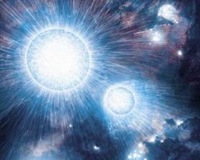
|
Cococubed.com
|
| Merging White Dwarfs |
Home
Astronomy research
Software Infrastructure:
MESA
FLASH-X
STARLIB
MESA-Web
starkiller-astro
My instruments
Neutrino Emission:
Neutrinos from de-excitation
Neutrino emission from stars
Identifying the Pre-SN
Neutrino HR diagram
Pre-SN Beta Processes
Pre-SN neutrinos
White dwarf pulsations:
12C(α,γ) & overshooting
Probe of 12C(α,γ)16O
Impact of 22Ne
Impact of ν cooling
Variable white dwarfs
MC reaction rates
Micronovae
Novae
White dwarf supernova:
Stable nickel production
Remnant metallicities
Colliding white dwarfs
Merging white dwarfs
Ignition conditions
Metallicity effects
Central density effects
Detonation density
Tracer particle burning
Subsonic burning fronts
Supersonic fronts
W7 profiles
Massive stars:
Pop III with HST/JWST
Rotating progenitors
3D evolution to collapse
MC reaction rates
Pre-SN variations
Massive star supernova:
Yields of radionuclides
26Al & 60Fe
44Ti, 60Co & 56Ni
SN 1987A light curve
Constraints on Ni/Fe
An r-process
Effects of 12C +12C
Neutron Stars and Black Holes:
Black Hole spectrum
Mass Gap with LVK
Compact object IMF
He burn neutron stars
Stars:
Hypatia catalog
SAGB stars
Nugrid Yields I
He shell convection
BBFH at 40 years
γ-rays within 100 Mpc
Iron Pseudocarbynes
Pre-Solar Grains:
C-rich presolar grains
SiC Type U/C grains
Grains from massive stars
Placing the Sun
SiC Presolar grains
Chemical Evolution:
Radionuclides in 2020s
Zone models H to Zn
Mixing ejecta
Thermodynamics, Opacities & Networks
Radiative Opacity
Skye EOS
Helm EOS
Five EOSs
Equations of State
12C(α,γ)16O Rate
Proton-rich NSE
Reaction networks
Bayesian reaction rates
Verification Problems:
Validating an astro code
Su-Olson
Cog8
Mader
RMTV
Sedov
Noh
Software Instruments
AAS Journals
2025 AAS YouTube
2025 Listing of 500+ Author Videos
2025 AAS Peer Review Workshops
2025 ASU Energy in Everyday Life
2025 MESA Classroom
Other Stuff:
Bicycle Adventures
Illustrations
Presentations
Contact: F.X.Timmes
my one page vitae,
full vitae,
research statement, and
teaching statement.
In this article we combine population synthesis, merger, and explosion models with radiation-hydrodynamics light-curve models to study the implications of such a progenitor scenario on the observed Type Ia supernova population. Our standard model, assuming double-degenerate mergers do produce thermonuclear explosions, produces supernova light curves that are broader than the observed type Ia sample. In addition, we discuss how the shock breakout and spectral features of these double-degenerate progenitors will differ from the canonical bare Chandrasekhar-massed explosion models. We conclude with a discussion of how one might reconcile these differences with current observations.

assumed profile |

x-ray luminosities |
Remnants of Binary White Dwarf Mergers (mergers I, 2010)
In this article we carry out a comprehensive smooth particle hydrodynamics simulation survey of double-degenerate white dwarf binary mergers of varying mass combinations in order to establish correspondence between initial conditions and remnant configurations. We find that all but one of our simulation remnants share general properties such as a cold, degenerate core surrounded by a hot disk, while our least massive pair of stars forms only a hot disk. We also find that some of our simulations with massive white dwarfs exhibit helium detonations on the surface of the primary star before complete disruption of the secondary. However, these helium detonations are insufficiently energetic to ignite carbon, and so do not lead to prompt carbon detonations.
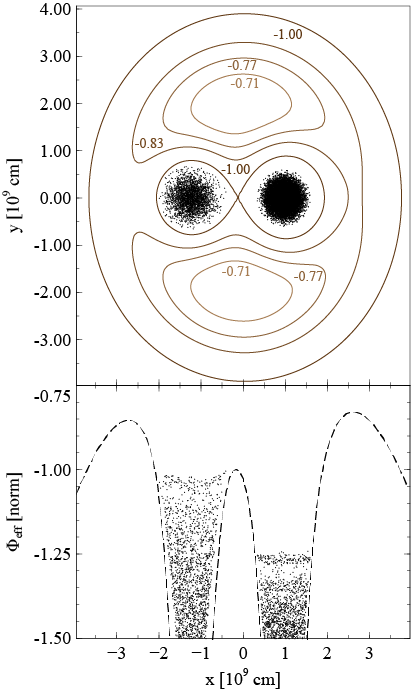
initial conditions matter |
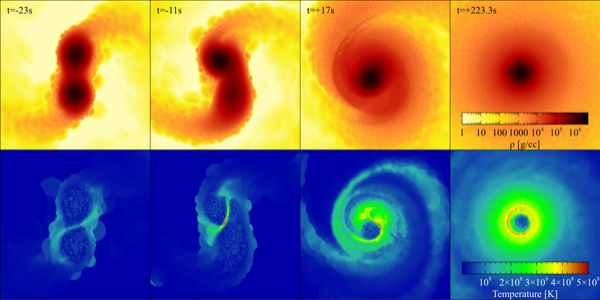
0.8 + 0.8 Msun evolution |
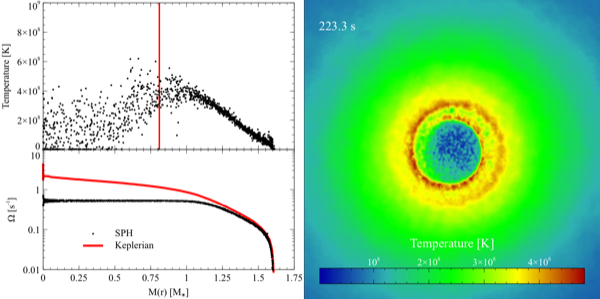
0.8 + 0.8 Msun, final configuration |
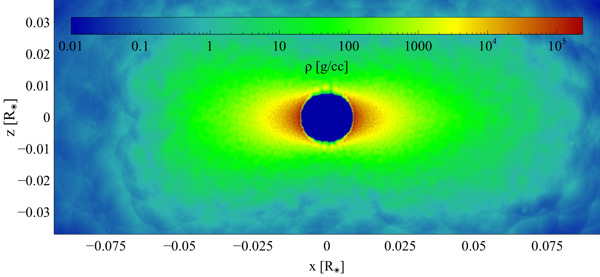
0.8 + 0.8 Msun, x-z plane slice |
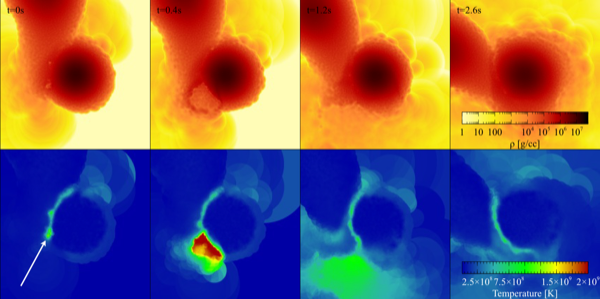
0.96 + 1.06 Msun, He detonation |
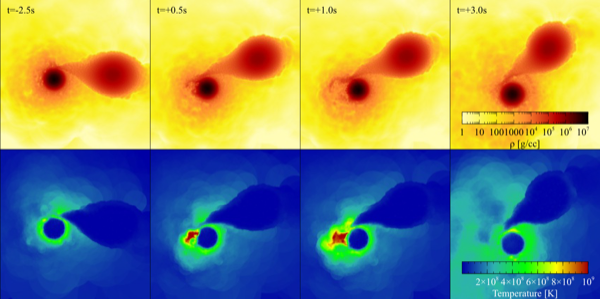
0.64+1.06 Msun, He detonation |